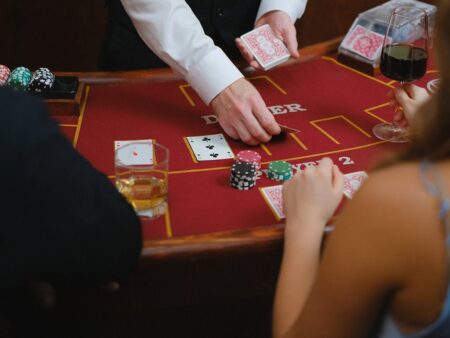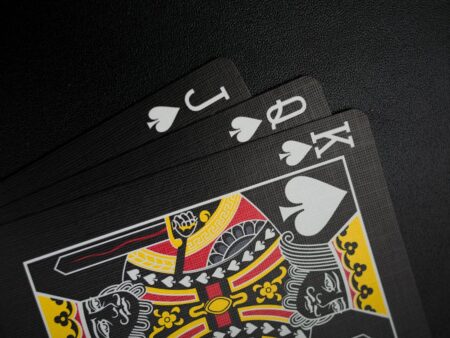Blackjack is one of the most popular casino games in the world, known for its combination of skill, strategy, and luck. While many players focus on winning hands, there’s another common outcome that often goes unnoticed: the “push.” If you’re new to blackjack or looking to deepen your understanding of the game, this blog post will explain what a push is, how it works, and its implications on your gameplay.
What Is a Push in Blackjack?
In blackjack, a push occurs when both the player and the dealer have hands with equal total values. This means neither side wins nor loses; instead, the hand is considered a tie. The term “push” comes from the fact that no one gains an advantage over the other, so the bettor’s wager is returned to them.
For example:
- If you have a hand total of 18 , and the dealer also has a total of 18 , it’s a push.
- If both you and the dealer have a soft 17 (an Ace and a 6, totaling 17 with the possibility of counting the Ace as 11 or 1), it’s still a push.
What Happens When You Push?
When a push occurs, the outcome is neutral for both the player and the dealer. Here’s what typically happens:
- Your bet is returned: Since neither side wins, your initial wager is pushed back to you, effectively resulting in no gain or loss.
- The hand ends: After a push, the game moves on to the next round. You’ll have the opportunity to play again with a new set of cards.
Implications of a Push
While a push doesn’t result in a win or a loss, it’s still an important part of blackjack strategy for several reasons:
1. Preserving Your Bankroll
A push prevents you from losing money on a hand where neither you nor the dealer has an advantage. By pushing, you avoid unnecessary risks and protect your bankroll.
2. Understanding Hand Strength
Pushes can indicate that both hands are equally strong or weak. If you’re unsure about making a bold move (like hitting against a strong dealer hand), a push allows you to play it safe without losing money.
3. Dealer’s Rules and House Edges
Dealers must follow strict rules in blackjack, such as standing on soft 17 and busting if their total exceeds 21. Understanding these rules can help you predict when a push is likely, especially if the dealer has a hand that could tie with yours.
When Can You Push?
You’ll typically have opportunities to push during gameplay when:
- Your hand matches the dealer’s hand exactly: For example, both have 5, 6, or any combination of cards totaling the same value.
- Neither side can improve their hand without risking a bust: If you and the dealer both have hands that are unlikely to win, a push becomes a safe outcome.
Strategies for Handling Pushes
While pushes themselves aren’t actively strategic, your decisions leading up to them can influence the outcome. Here are some tips:
- Know when to stand: If your hand is strong enough to tie with the dealer’s, standing (rather than hitting) ensures you don’t risk losing.
- Be aware of soft hands: A soft hand (one containing an Ace counted as 11) can give you an edge if the dealer has a hard hand. However, if both hands are soft and equal in value, it’s still a push.
- Understand the dealer’s rules: Knowing when the dealer will hit or stand can help you predict pushes more accurately.
How Does Push Affect Your Blackjack Strategy?
Pushes play a crucial role in blackjack strategy because they allow players to avoid unnecessary losses. By recognizing situations where a push is likely, you can make better decisions about when to hit, stand, double down, or split.
For example:
- If the dealer has a 6 and you have a 12, it’s a push if neither of you improves your hand.
- If both you and the dealer have a 7, it’s a push regardless of how you got there.
Frequently Asked Questions About Pushes
1. Can I win money from a push?
No, pushes result in ties where no one wins or loses money. Your bet is returned to you as it stands.
2. Is a push better than losing?
Yes, because a push prevents you from losing money on the hand. It’s often seen as a safer outcome when neither side has an advantage.
3. Can I get insurance on a push?
No, insurance is only applicable if the dealer has an Ace and could potentially make a blackjack. If it’s a push, no insurance is needed because the dealer doesn’t have an Ace or a hand that can beat yours.
Conclusion
A push in blackjack is when both the player and the dealer have hands of equal value, resulting in a tie. While pushes don’t result in wins or losses, they play a significant role in preserving your bankroll and guiding your strategic decisions. By understanding when to expect a push and how to handle it, you can improve your overall blackjack strategy and make more informed decisions at the table.
Remember, blackjack is all about balance—knowing when to take risks and when to play it safe. A push is just one of many tools in your arsenal to help you navigate the game and come out ahead.











